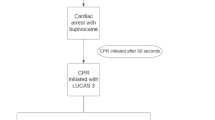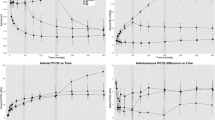Abstract
Background: Carbon dioxide is the current gas of choice for pneumoperitoneum, but hemodynamic and acid–base effects secondary to its systemic absorption have been reported. Various studies have suggested inert gases as alternatives.
Methods: We studied the cardiopulmonary responses to intravenous infusion of carbon dioxide, nitrous oxide, argon, helium, and nitrogen in anesthetized swine. The gas was infused into the femoral vein at a rate of 0.1 ml · kg−1· min−1 for 30 min. The changes in end-tidal CO2, mean arterial pressure, hemodynamics, and arterial blood gases were compared to baseline values.
Results: No animals died during infusion of the soluble gases (CO2 and N2O). Three of the five pigs infused with nitrogen died suddenly at 20 and 30 min of infusion. The animals in the insoluble gas groups (Ar, He, N2) experienced clinical pulmonary gas embolism and severe acidemia, hypercapnea and tachycardia.
Conclusions: Venous gas embolism is poorly tolerated when the gas is relatively insoluble. Insoluble gases should not be used for pneumoperitoneum when there is any risk of venous gas embolism.
Similar content being viewed by others
Author information
Authors and Affiliations
Additional information
Received: 4 April 1996/Accepted: 21 August 1996
Rights and permissions
About this article
Cite this article
Roberts, M., Mathiesen, K., Ho, H. et al. Cardiopulmonary responses to intravenous infusion of soluble and relatively insoluble gases. Surg Endosc 11, 341–346 (1997). https://doi.org/10.1007/s004649900359
Published:
Issue Date:
DOI: https://doi.org/10.1007/s004649900359




